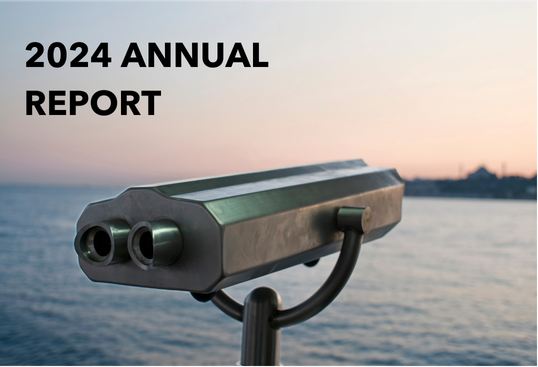Would-be-first-time home buyers are frustrated. For years they have been waiting to get into the home ownership club only to watch house prices climb higher. When COVID-19 hit and the world faced a pandemic, these owners continued to sit on the sideline. They watched as houses did not correct, as many of them had hoped, but against all expectations, continued to climb and hit new all-time highs. It is not just first-time buyers but also those looking to upgrade or wanting more space in light of the current environment that have found themselves frustrated.
Driven by the desire to purchase something now before houses truly become unaffordable, many of these have joined the ranks of having to chase listings as soon as they are available with multiple bids far above the listed prices, abandoning conditions and inspections.
Fueled by historically low interest rates, elevated prices have made houses unaffordable for many. We wanted to understand just how unaffordable houses are today relative to a historic context. Interest rates were 19.25% in July of 1982, for example – were mortgages less affordable then than they are now?
To answer this question, we did some research to help uncover where we sit from an affordability standpoint, all focused on the Toronto/GTA market. While this research is open to interpretation (discussed in more detail later in this article), the results are definitely interesting and worth sharing.
We started by looking at the Toronto Regional Real Estate Board Average Sale Price from 1975 to February 2021. In 1975 the average sale price for a house was $57,581. By February of 2021, the average price had climbed to $1,045,488. Though that seems like a huge leap, it may surprise many that this represents an annual compound growth of only 6.51%.


However, we were less interested in the absolute or relative cost of the house and more interested in the affordability of houses. We wanted to know if a mortgage on a house today would be more or less expensive than a mortgage held in any year from 1975 to February of 2021. In order to be consistent in our analysis, we assumed that throughout the years, a buyer would put 20% down on their house and would hold a 25-year mortgage. That would mean that, in 1975, with an average sale price of $57,581 and 11% five-year mortgage interest rate, a buyer would hold a mortgage of $46,064.80.
This means that a buyer who held a 25-year mortgage in 1975 with 20% down, would have to pay $451.49 per month to carry this mortgage. This was true in 1975 dollars, and so needs to be adjusted for inflation to compare to current rates. Using annual CPI numbers3 to adjust $451.49 to today’s purchasing power, that equates to $2,132.90.
We did this same exercise for each of the 45 years between 1975 and February 2021 to better understand where we currently sit compared to historical mortgage costs.
In our research, we found that the average monthly cost of carrying a mortgage (normalized for inflation) over the time frame analyzed was $2,681.55. The least expensive was in 1997, where the monthly cost of servicing a similar mortgage was $1,810.67. The most expensive year to own a house based on the methodology used was today – with a carrying cost of $4,787.67. The second highest cost was in 1990 – with a carrying cost of $4,359.83.
In February of 2021, the cost of carrying a mortgage on a new house, at $4,787.67, is the highest in 45 years.


To better understand similar environments, let’s take a deeper look at 1990 and what occurred at that time. In the 1980s interest rates were high. The 5-year posted mortgage rate hit as high as 21.75% in September of 1981. From that point, interest rates generally declined. In 1989, rates had reached 11.75% and housing sale prices had enjoyed four years of double-digit percentage growth. However, in 1990, the trend reversed, and mortgage rates increased by 2.5% to 14.25%. At the same time, Canada (and most of the Western world) experienced a recession. Canada’s economy was in recession for two full years from April 1990 to April 19924. The effect of an increase in rates with an economic slowdown proved to be detrimental to housing prices. The average sale price of houses dropped from $273,698.00 in 1989 to $198,150.00 in 1996. A 27.60% decline. Following this decline, and to stimulate the economy, rates once again started their downward trend from 14.25% in 1990 to 8.50% in 1996. Over the next 24 years, this downward trend in mortgage rates continued, and housing in turn experienced a positive long upward trend. In fact, sale prices experienced only one negative year-over-year change in that 24-year period (2018 – a year in which rates went up).
In comparing the affordability of purchasing a home in 1990 versus today, it is important to acknowledge both similarities and differences in the environment. From 1985 to 1990, housing markets jumped 150.88% in only 5 years. Comparatively, despite average sale prices increasing strongly in recent years, it took 9 years (from 2011 to Feb of 2021) to experience the same growth of almost 150%. The pandemic recession has certainly created economic pain. At this time, however, it is unclear whether the economy and employment will continue to bounce back or whether this economic pain will mean unemployment rates remain lower for longer. One strong difference that cannot be ignored is the historically low current interest rates. In 1990, interest rates had room to decrease. As that happened, housing prices and affordability normalized. In today’s environment, while there has been much talk of maintaining low interest rates for the time being, the threat of inflation suggests that central banks may have to raise rates in following years.
In order for housing to normalize to a more affordable level, rates have to decrease, or housing prices have to decline.
We decided to run a few scenarios and ask ourselves if affordability were to normalize, what that would mean for average home prices. If current rates did not change, to bring the current cost of $4,787.67 to the historical average of $2,681.55, the average sale price would need to decrease by 37.01% to $585,625. If interest rates increased by only 1%, the cost of carrying a mortgage would increase to $5,282.02. For this higher interest rate environment to normalize to the average, average new sales would need to decrease by 49.23% to $530,812.50.
Before we jump to conclusions and assume that the housing market will correct by 37% or 49%, we recognize that there are many factors that make this analysis overly simple. We did not look at population increases for example. Demographics and immigration affect housing prices. In Canada, immigration contributes strongly to demographic changes (especially in a large metropolis like Toronto). It will be interesting to know the strength and length of impact on immigration that COVID-19 will have and how that might in turn contribute to housing affordability. Available supply of homes will also affect housing prices and were not factored into this analysis. While many regions are experiencing similar booms in housing prices, we only looked at Toronto/GTA data for the purpose of this exercise. Another factor that affects affordability of housing is the overall household debt to disposable income. According to Statistics Canada, in 1980, the ratio of household debt to personal disposable income was 66%; that ratio in Q2 of 2020 was 158.2%5. This means that, in aggregate, Canadian households owe $1.58 for every dollar of disposable income. Finally, wage inflation and changes in wage distribution should also not be discounted when considering future trends for housing.
There are many factors that contribute to housing trends and despite the high cost to carry a mortgage, average sale prices can continue to have the same upward momentum for years. Especially if rates do not rise too quickly or too severely. However, this analysis shows that, if you’ve been feeling frustrated with recent housing prices, your frustration is justified: housing today is less affordable to many than it has been in 45 years.
Sources
- https://www.ratehub.ca/5-year-fixed-mortgage-rate-history
- https://trreb.ca/files/market-stats/market-watch/historic.pdf
- https://www150.statcan.gc.ca/t1/tbl1/en/tv.action?pid=1810000501&pickMembers%5B0%5D=1.2&cubeTimeFrame.startYear=1975&cubeTimeFrame.endYear=2020&referencePeriods=19750101%2C20200101
- https://en.wikipedia.org/wiki/Early_1990s_recession
- https://www150.statcan.gc.ca/n1/daily-quotidien/200911/cg-a004-eng.htm
This material is provided for general information and is subject to change without notice. Although every effort has been made to compile this material from reliable sources; no warranty can be made as to its accuracy or completeness, and we assume no responsibility for any reliance upon it. Before acting on any of the above, please contact Tall Oak Private Wealth of Raymond James Ltd., for individual financial advice based on your personal circumstances. Raymond James Ltd. – Member – Canadian Investor Protection Fund. Insurance offered through Raymond James Financial Planning Ltd., not a member – Canadian Investor Protection Fund.
The views expressed in this commentary are those of Tall Oak Capital Advisors as at the date of publication and are subject to change without notice. This commentary is presented only as a general source of information and is not intended as a solicitation to buy or sell specific investments, nor is it intended to provide tax or legal advice. Statistics, factual data and other information are from sources Tall Oak believes to be reliable but their accuracy cannot be guaranteed. This commentary is intended for distribution only in those jurisdictions where Tall Oak Capital Advisors are registered. Securities-related products and services are offered through Raymond James Correspondent Services Ltd., member Canadian Investor Protection Fund. Insurance products and services are offered through Gryphin Advantage Inc., which is not a member-Canadian Investor Protection Fund. This commentary may provide links to other Internet sites for the convenience of users. Tall Oak Capital Advisors is not responsible for the availability or content of these external sites, nor does Tall Oak Capital Advisors endorse, warrant or guarantee the products, services or information described or offered at these other Internet sites. Users cannot assume that the external sites will abide by the same Privacy Policy which Tall Oak Capital Advisors adheres to.




